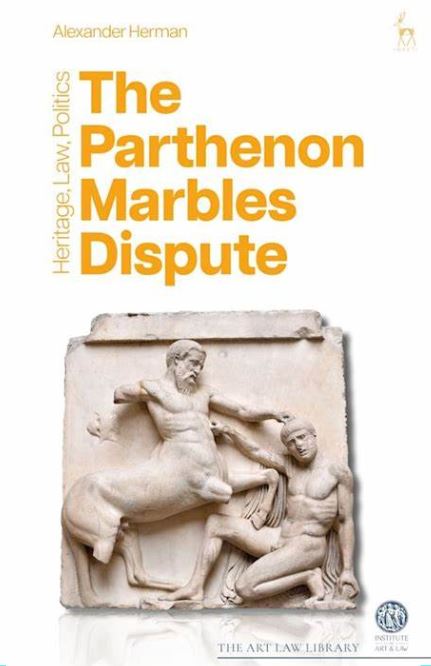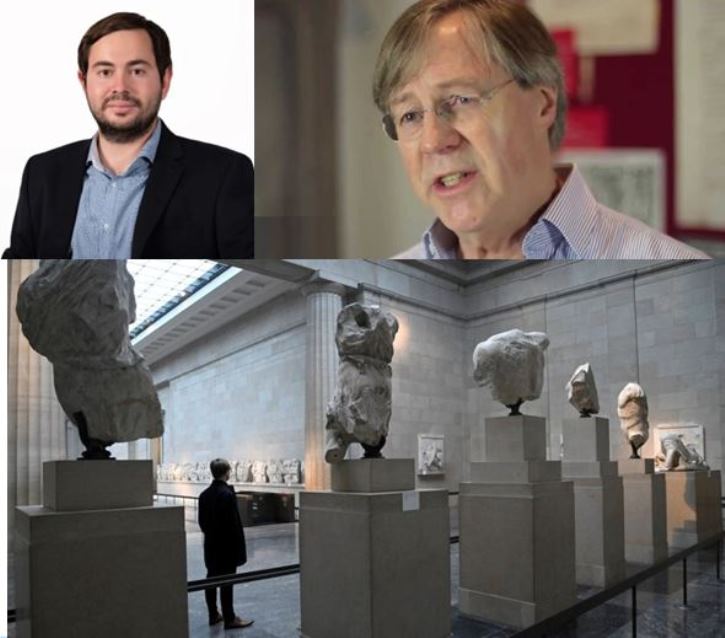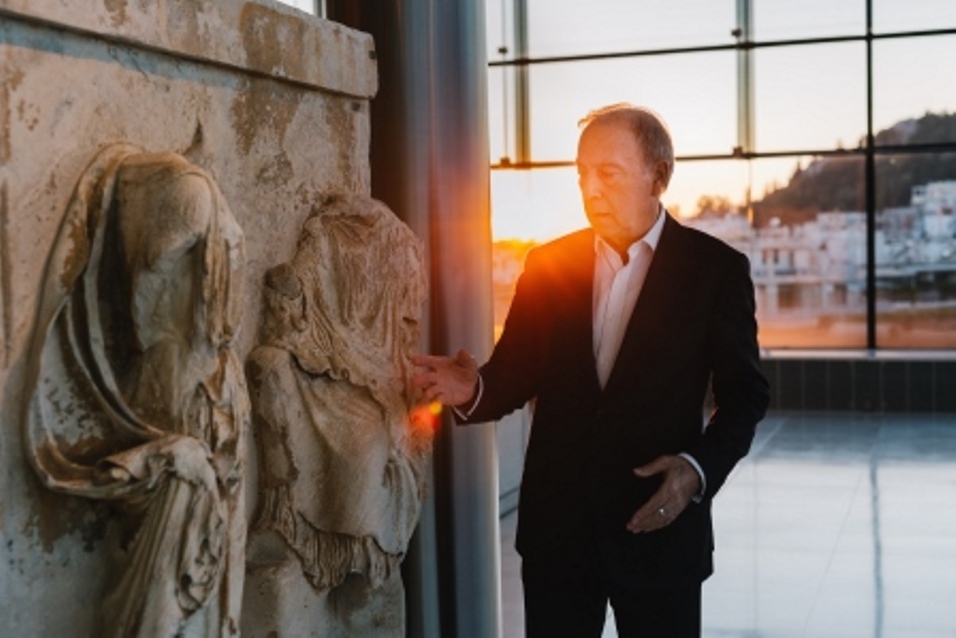THE PARTHENON MARBLES DISPUTE: Heritage, Law, Politics
Alexander Herman
The Parthenon Marbles are hot. Not in the sense that they are to be lusted after, as was Praxiteles’s also marble sculpture, the Aphrodite of Knidos, but because the question of whether the extant members should—ever—be reunified in Athens is a hot-button political issue, hot enough to set the Prime Ministers of Greece and the U.K. at each other’s throats. Into the fray intrepidly steps Alexander Herman, Director of the Institute of Art and Law, UK.
His otherwise estimable work suffers in one regard, however, the timing of its publication. It unfortunately finds itself up against that of Professor Catharine Titi, The Parthenon Marbles and International Law (Springer Verlag, 2023). Titi is an international human rights lawyer-academic of Greek origin based in Paris. Her magisterial work is truly groundbreaking and superior to the first four chapters of Herman’s (pp. 1-65). Those cover the original acquisition—or theft—of what ‘our man in Constantinople’, the Seventh Lord Elgin, UK ambassador to the Ottoman Sublime Porte, had removed by force and fraud from the ruined temple on the Athenian Acropolis to—eventually—London in the first decades of the 19th century. As Titi demonstrates beyond a peradventure, Elgin had no good legal title to what he claimed to own and sold to the British government in 1816 for £35,000. A fortiori, the British government had none either: it is only in UK domestic law that we the British people ‘own’ Parthenon sculptures.
H.’s book is, however, a useful and usable complement to Professor Titi’s. Like her, he rightly raises the crucially moral—as well as cultural, political, aesthetic etc.—issue at stake in the original Elgin (ad)venture—see ‘Law and Morality’ (pp. 51-3, concluding Chapter 3, ‘A Firman by Any Other Name’). He then proceeds in his remaining six chapters to give, as claimed, a thorough and no less importantly a balanced and critical account of the Elgin ‘dispute’, almost blow-by-blow.
Between 1816 and 2024 there have been several notable crunch-points: among them the newfangled Greek state’s original request for return of the BM’s marbles in the 1830s, and the passage in 1963—again, as in 1816, by a Tory government—of an Act of Parliament forbidding with only a couple of exceptions the BM ever to de-acquisition any of its now about 8 million (minus of course the 2000 or so recently liberated by a rogue curator) holdings. Look to the end, as Herodotus has one of his characters (Solon) presciently say …
Herman’s book is provided with a truly wonderful index, which has no fewer than ten ‘Parthenon’ entries, extending over almost 4 double-column pages. These start with: Parthenon centrality of, and proceed by way of … construction of (447-438) (Periclean Project); … Marbles (after arrival in Britain); … Marbles (history of the claim: British arguments against return/counter-arguments); … Marbles (history of the claim: legal action (IARPM)); … Marbles (history of the claim) (in date order); … Marbles (resolving the dispute); ‘Parthenon Partnership’; and Parthenon Project; to, finally, Parthenon sculptures.
Another special feature of H.’s book besides its index is its incorporation of the views of—among other interviewees—curators, museum directors, lawyers, archaeologists, and politicians in both London and Athens. Yet another are its suggestions for new ways of resolving all such cultural-heritage disputes going forward. If only….
Readers will no doubt wish to be selective in what claims and arguments they choose to focus upon. The very construction of the original Parthenon (not the whole temple’s name) was controversial, and the temple’s function or rather functions, and the interpretation of some or all of its many and polyvalent adornments, remain controversial to this day. H. gives a helpful dateline of the history of the ultimately Greek claim to reunification and the mainly British government/Museum’s counter-claims.
But what of his own views? There is a clue in the fact that he is not in favour of modifying, let alone rescinding, the 1963 Museums Act, and on p. 155 there is perhaps a sketch in miniature of his own, studiously neutral, formally apolitical position: ‘Perhaps it may be better … to leave the ultimate question of resolution to the museums themselves’. That will not be music to those of us who firmly believe the rightful permanent home for those Parthenon sculptures that the British Museum currently holds in trust for the British nation is the (specially dedicated, opened in 2009) Acropolis Museum in their native Athens.

Paul Cartledge
Vice-Chair of the British Committee for the Reunification of the Parthenon Marbles (BCRPM), a non-profit campaign group established in 1983, and an elected Vice-President of the International Association for the Reunification of the Parthenon Sculptures (IARPS).
This review was published in Classic for All.






Comments powered by CComment